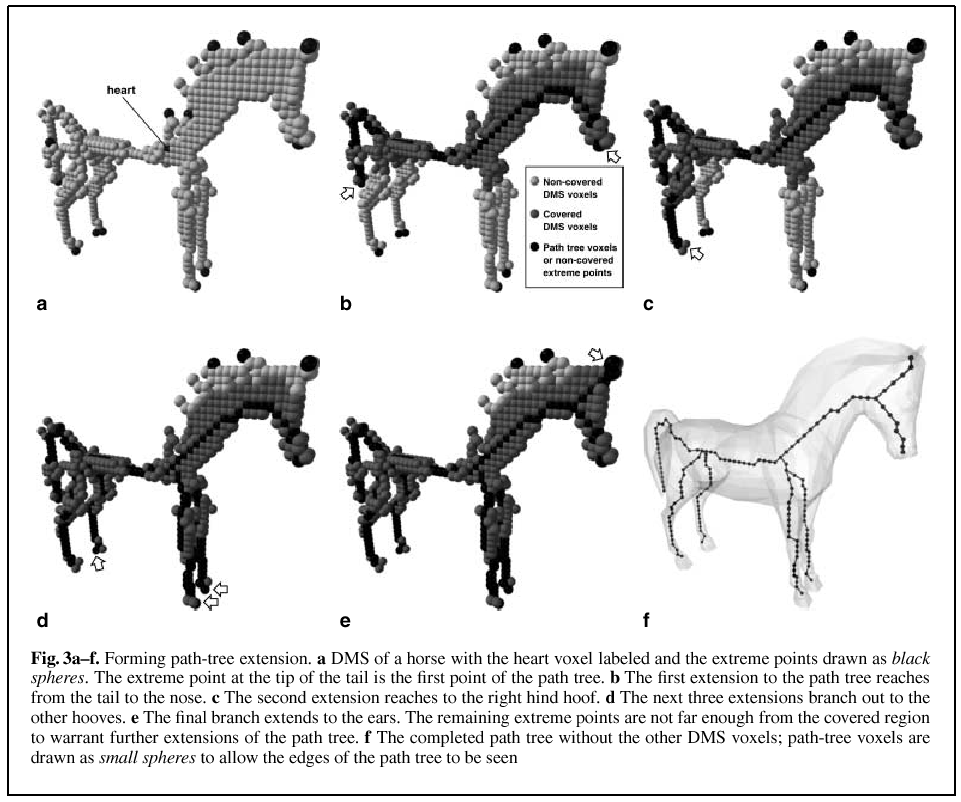
July 22, 2002
Publications in Graphics on Shape by Wade, Parent et al.:
BibTeX references.
The Visual Computer, Vol. 18, No. 2, March 2002, 97-110.
This paper describes an algorithm for automatically generating a control skeleton (sometimes called an IK skeleton) for use in animating a polygonal data model. The algorithm consists of several steps, each of which is performed automatically. The basic process involves discretizing the figure, computing its discrete medial surface (DMS), and then using the DMS both to create the skeletal structure and to attach the vertices of the model to that structure. The system can produce a reasonably good control skeleton for any of a variety of figures in as little as 1 or 2 min on a low-end PC.
Keywords: Control skeleton - IK skeleton - Skeleton rig - Articulated figure

Proceedings of the Computer Animation (CA'00), Philadelphia, Pennsylvania, May 2000.
This paper describes an algorithm for automatically generating a control skeleton for use in animating a polygonal data model. The algorithm has several steps. First, the figure is voxelized, and a Euclidean distance map is computed for voxels interior to the figure. A path creation algorithm then generates a tree-structured set of voxel paths spanning the object's interior. Simplification of these paths leads to a control skeleton for the object. The voxelization is used again to anchor the vertices of the polygonal model to the skeleton. Afterwards, new joint angles may be specified for the skeleton, and once the skeleton has been updated, vertices of the model can be repositioned accordingly. Unlike previous methods, the algorithm is fully automated, requiring very little user input. In addition, it can be applied successfully to a wide variety of objects. Furthermore, the algorithm is fast - it can produce a useful control skeleton for most objects in less than two minutes on a low-end PC.
Page created & maintained by Frederic Leymarie, 2002.
Comments, suggestions, etc., mail to: leymarie@lems.brown.edu